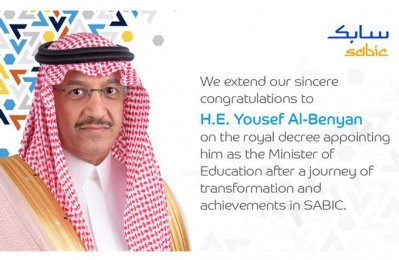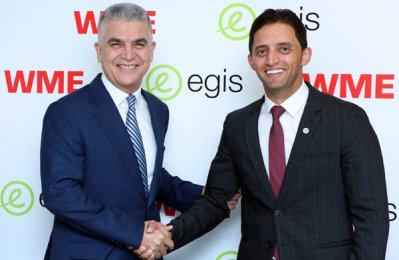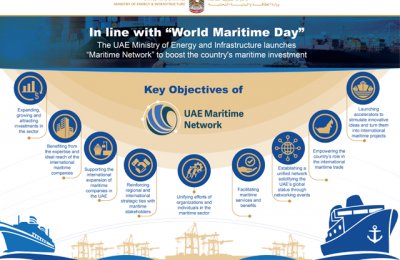Inclusion and talent strategies for energy firms in Middle East
Navigating the energy transition will be a huge challenge, requiring top-tier talent to solve incredibly complex problems. This will require retaining and reskilling today’s workers, while integrating new people with varied backgrounds and capabilities.
More Stories
Navigating the energy transition will be a generational challenge, requiring top-tier talent to solve incredibly complex problems. Meeting this challenge will require retaining and reskilling today’s workers, while integrating new people with varied backgrounds and capabilities, say Eric Beranger-Fenouillet, Partner, Bain & Company Middle East and Emily Emmett, Partner, Bain & Company Houston, in an opinion article.
Leaders will need to invest in creating inclusive organisations where everyone feels like a valued contributor with a shared purpose.
Generations of talented individuals in the Middle East have pursued careers in energy because it offered opportunities for learning, teamwork, and impact in the service of powering our communities. This will be as true in the future as it was in the past. Looking backward, the talent that made the difference was concentrated in engineering and operational disciplines. But as the energy transition expands the range of business activities that energy companies pursue, that talent base is expanding and diversifying.
Talent strategy is becoming an existential priority in the energy sector. This is the result of several pressures challenging the ability to find, hire, and retain talent: a wave of retiring professionals, demand for new roles to build out new businesses, and a talent drain from the energy sector to technology, to name a few. To address these gaps, companies are rethinking how and where to expand the funnel for potential new hires, while also innovating and experimenting with new strategies to retain and reskill the workforce that keeps their current businesses running.
Winning new talent with diverse new perspectives
Energy companies know they need to attract employees with new skills and capabilities, often from more diverse demographics than the current workforce. Some of this talent will need to be won over from the technology, finance, and public sectors, and they’ll bring new perspectives on teaming, compensation, and location (including remote options). Like current employees, they want to feel included in the companies they work for, and they want to know they’re experiencing an equitable talent journey, no matter their role.
Bain’s research found that many senior leaders may have a rosier picture of inclusivity in their companies than the new hires they’re hoping will build their careers there. Across factors, senior executives rated their organisations as more inclusive than did more junior team members.
These blind spots make it harder for energy and natural resources companies to know how to make their organisations more inclusive to a more diverse pool of talent. They can make it hard to stem the “leaky bucket” effect, in which well-intentioned recruiting efforts bring in racially or gender-diverse employees—who then leave soon after because they don’t feel like they belong or are included. Bain’s recent research on inclusivity identified the factors that make ENR employees feel included.
Supporting current talent
While energy companies scrutinise and adapt talent strategies to include new sources and types of skills, it would be a mistake to assume that “legacy” talent profiles and preferences will remain unchanged. Most of the current energy workforce is highly motivated to support the energy transition and eager to apply their current capabilities and new skills to new missions. They’re also keen to remain relevant and valuable in an uncertain future.
The energy sector needs a skilled workforce doing many of the same things that have kept the industry running for decades—and will remain important for years to come. Yet even established roles are changing. Leaders need to continually inspire and motivate the workforce, making sure skills don’t erode, and showing these workers they remain important, valued, and included, even as their companies are transformed.
The inclusion imperative
There’s no simple solution for the complex talent challenges facing the energy sector. Success will require companies to deeply engage with and draw out the full potential of new and current talent populations, and to inspire them to innovate and solve problems together, not just in parallel. We believe that improving the sense of inclusion for all employees, old and new, will be a critical enabler of the evolving talent engine required to power the energy transition.
New employees want to have a seat at the table—to be invited to help solve the challenge of how to serve their communities in more environmentally sustainable ways. Existing employees also want to contribute to new priorities and want to know their unique skills and experiences remain valuable in an uncertain future. Inclusion won’t solve all of the complex talent challenges, but it will play a foundational role in any strategy.
Getting this right as an organisation is complex in any scenario, even more so in an industry undergoing major disruption. The tactics that support and improve inclusion are nuanced. But we’ve found a few common themes across industries that feel especially relevant to today’s energy landscape.
• Signal commitment. People working in energy, both new and existing employees, are looking to know that they’re a part of the solution; that their organization is committed to thoughtfully navigating the transition; and that their perspectives are valued. Leaders should listen deeply, then talk openly and frequently about a sincere commitment to both the transition and fully including a diverse talent base.
• Promote growth. Everyone wants to build skills to navigate to the other side. Everyone wants to look ahead to a rewarding career path, characterized by deeper skills and expanding autonomy and authority. Invest in building clear, transparent career paths for new talent and helping existing talent understand lateral opportunities. Cultivate a growth mindset in leaders and give decision-making authority and leadership opportunities to the next generation to help build skills and confidence.
• Facilitate connection. Scrutinize the organizational silos that exist today, and guard against reinforcing them or creating new ones. New and existing employees need to be truly integrated, with an appreciation for the roles everyone plays in serving the organization’s long-term purpose and near-term strategy. Identify and experiment with tactics to strengthen connection across potential siloes, for example, through Agile teaming, cross-training, mentoring programs, and diversity affinity groups.
Navigating the energy transition will require the deliberate marriage of new and existing talent communities over many years, joining together to adopt new ways of working in support of new products and services as well as legacy business models. These are the building blocks of inclusion for a diverse population, which we see as essential to attracting, retaining, and benefiting from the full potential of the diverse talent base needed to thrive in the energy transition. -TradeArabia News Service
Projects
















